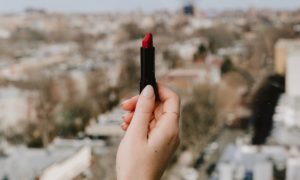Most recently updated 1/12/21
We’re all about going green here at NakedPoppy, from prioritizing food choices that help the earth to beauty products that are made with the best natural ingredients. But our green love gets literal when it comes to our obsession with matcha.
Matcha, a finely ground green tea leaf powder, is decidedly on trend these days, with matcha products popping up everywhere from candies to Starbucks. It’s also steadily becoming available in more and more beauty products.
We NakedPoppy ladies are all about knowing more about what we’re consuming, and why it makes a difference. So we checked in with two of our all-time favorite matcha purveyors, Ippodo Tea, a Kyoto-based green tea purveyor with three centuries of history, and Stonemill Matcha, a San Francisco cafe serving up everything from slow-whisked matcha beverages to gorgeous, matcha-laced pastries, to get the DL on matcha’s history, its benefits, and the best ways to work matcha in your daily routine.
What’s the cultural history of matcha?
Matcha has a long, rich history, with ties to Buddhist monks and deep, ceremonial practices.
“Matcha was the first tea drinking method brought over from China in the 12th century,” says Aimee Bianca, Ippodo Tea representative. “For centuries, this tea, made by stone-grinding tea leaves into powder, was enjoyed by Buddhist monks as part of their practices. From there, matcha became popular among the nobility in Japan as part of the tea ceremony, which is a ceremony focused on producing the most aesthetically pleasing bowl of matcha.”
Growing top-quality tea leaves, and preserving matcha’s historical roots, remains essential in the matcha industry today.
“Historically, Uji, Kyoto has been the area where the highest quality matcha comes from,” says Candice Ng of Stonemill Matcha. “Uji, Kyoto is renowned geographically for premium matcha because of its steep valleys that create great temperature differences between day and night with a high annual rain. Because of these geographical attributes, Kyoto is known to have a long history of matcha farming practices and is considered the birthplace of matcha.”
What are the major health benefits of integrating matcha into your diet?
Matcha packs an even greater punch than simply drinking green tea. When you drink matcha, you’re ingesting the whole tea leaf – and all of its associated benefits – rather than diluted, tea-steeped water.
“Matcha is known for having a multitude of benefits ranging from boosting metabolism, burning calories, lowering blood sugar, and even reducing your cholesterol,” says Ng. Much of this benefit comes from the amino acid L-Theanine, which is also the source of matcha’s caffeine (more on that below).
“L-Theanine is converted to the antioxidant catechin when exposed to sunlight,” Ng explains. “Catechin has a wide range of benefits including cancer protection, weight loss, and preventing cell damage. One specific catechin called EGCG is an effective stimulator of thermogenesis, the biochemical process by which fat in the body is burned to provide energy.”
What about beauty products with matcha?
Matcha is truly good for you inside and out. Rich in antioxidants, skin products with matcha – like creams, masks, cleansers, and even lip balms – used regularly, can aid in getting healthy, vibrant skin. Specifically, catechin polyphenols, that straight up slow down damage to skin cells while also hydrating your skin (bye, fine lines!). Those antioxidants are also evening out your skin tone and diminishing dark spots.
In case that wasn’t enough, matcha also works to reduce redness, irritation, and inflammation, thanks to the caffeine in the tea leaves.
What’s the difference between drinking matcha to perk up versus coffee?
Speaking of caffeine, matcha has the ability to perk you up without making you jittery. It also offers a gradual and steady caffeine boost, rather than a coffee-fueled spike and crash. Still, approaching matcha in this manner is, per Bianca, a relatively new approach.
“This perspective has been brought about because of the interesting new global perspectives applied to this traditional Japanese tea,” she says. “That said, matcha does have the most amount of caffeine of all tea drinks per serving, simply because when you drink matcha, you are consuming the entire tea leaf and not just what dissolves in the water.”
Ng breaks it down for us: “Matcha has about 70 mg of caffeine per 1 teaspoon of matcha for an 8 oz cup, whereas a brewed cup of coffee has 95 mg of caffeine for an 8 oz cup.”
How do you recommend working matcha into your daily routine?
Matcha may not be an exact match for coffee, caffeine-wise, but it’s well worth working into your everyday routine.
“To start, we recommend switching to matcha as your second coffee,” Ng says. “It will give you sustainable energy instead of having caffeine crash in the afternoon.”
Taste-wise, Bianca notes, matcha works well as a replacement for black coffee and tea.
“Matcha is nice in the morning with breakfast or afterwards,” she says. Matcha’s rich taste is a nice pairing for your favorite breakfast foods, and stands up as well as coffee.
Both agree that honoring the ceremonial aspect around matcha, and setting apart a small, dedicated part of your day to enjoy it, is a particularly nice way to form a matcha drinking habit.
“Try having a little tea ceremony for yourself after yoga or meditations,” suggests Ng. “It will help you relax and calm down.”
Bianca adds that having a dedicated matcha moment allows you to get the most out of the matcha itself, too.
“Matcha powder is never actually dissolved in water, so over a few minutes, it will settle to the bottom, Bianca explains. “We recommend setting a few minutes aside to enjoy your matcha fully, and then move onto the next activity.”
What about enjoying matcha beyond tea?
Drinking matcha is the most traditional way to enjoy it, and the most direct way to enjoy its health benefits. But matcha has become a beloved ingredient for cooking and baking, too.
“Matcha provides a nice bitterness to cut through fattiness, and provides depth to a dish,” Ng says of Stonemill’s matcha-filled menu. “Our chefs incorporate it into our pastries like our matcha cream pie and matcha white chocolate chip cookies. It works well for savory dishes like our matchazuke which is a take on ochazuke where a tea broth is poured into a bowl with rice and fish.”
Looking for easy options to try at home? Beyond baked goods, Bianca suggests sifting matcha into icing, on top of yogurt, or even making a matcha affogato. “Just prepare your matcha on the strong side, and pour it over ice cream!” she says.
Our matcha quick takes:
- Matcha is a finely ground tea leaf powder. When you drink matcha, you’re ingesting the whole tea leaf, and get a bigger health boost than simply drinking green tea.
- Major health benefits from matcha include cancer protection, weight loss, and preventing cell damage, thanks to amino acid L-Theanine, which is converted to the antioxidant catechin when exposed to sunlight.
- You can seek out matcha-infused topical beauty products, too – matcha is rich in antioxidants, making it great for cultivating clear, vibrant skin. It also helps reduce skin irritation and inflammation.
- Matcha has less caffeine than coffee, but can still be consumed as a pick-me-up. Expect a calming sensation in addition to increased alertness, versus a jittery, coffee-induced caffeine rush.
- Flavor-wise, matcha acts as a great replacement for coffee. It’s also a great ingredient in foods like baked goods, stirred into icing or yogurt, or even poured over ice cream.
- Try incorporating matcha by having a personal tea ceremony for yourself after yoga or meditating. Carve out dedicated, focused time to prepare and enjoy it.
- Our favorite way to enjoy matcha? In our beauty products, of course. There’s nothing like applying nutrient-rich, healthy ingredients to your skin and getting your glow on.






Comments